
Part II: “Humanitarian Aid”
In February, corporate media went ballistic when the new administration of U.S. President Donald Trump announced the dismantling of the United States Agency for International Development (USAID).
The uproar claimed the dismantling of the foreign aid agency would not only result in massive government layoffs but cause an uptick in hunger and disease around the world. Superficially, the shutdown was depicted in the media as a betrayal of Washington’s supposed humanitarian values, but to those aware of its real history as a tool of Western imperialism, the shuttering of USAID was cause for celebration.
The indignation within the establishment only further revealed its raison d’être as a mechanism for CIA soft power and U.S. global dominance behind the guise of foreign assistance.
In the first part of this investigation, the CIA’s clandestine backing of Chechen separatism was exposed in a historical and geopolitical context. One of the pathways through which material assistance was provided were not-for-profit charities that used humanitarian aid as a front for funding terrorism. Perhaps the most incriminating piece of evidence turned up in the aftermath of the 2013 Boston Marathon bombing when it came to light that an uncle of the Tsarnaev brothers lived at one time in the Maryland home of a career CIA case officer named Graham Fuller.
Fuller was the vice-chair of the National Intelligence Council in the Reagan administration and the CIA Station Chief in Kabul in 1978, just before the agency began its infamous covert program to aid the Afghan mujahideen in a proxy war against the Soviet Union, known as Operation Cyclone. While married to Fuller’s Turkish-American daughter and sharing a roof with his spymaster father-in-law, Ruslan Tsarni formed a company called the Congress for Chechen International Organizations.
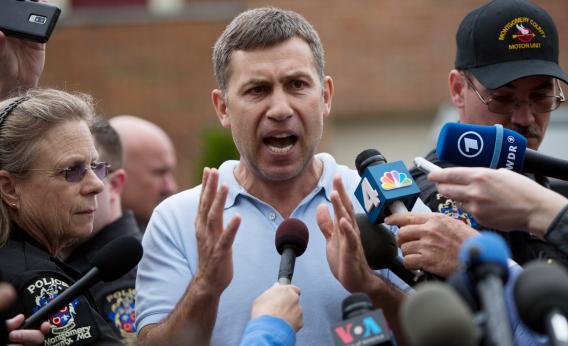
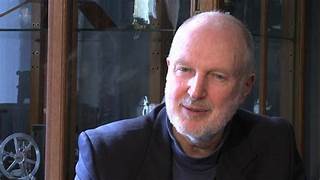
Legal documents show Tsarni’s group delivered money and thousands of mine-resistant blast boots, uniforms and other items to the separatists in collaboration with a pretend charitable trust called the Benevolence International Foundation (BIF). After 9/11, BIF was indicted by the U.S. Treasury Department for redirecting donations intended for humanitarian relief to sponsor al-Qaeda. This included aiding the travel of known terrorists and purchasing ammunition for jihadist camps around the world, including Chechnya, Bosnia, Pakistan and Afghanistan.
Another uncle of the Boston bombers, Alvi Tsarni, shared an address with a Chechen exile group called the United States-Chechen Republic Alliance Inc. (USCRA) in Silver Spring, Maryland. The president of USCRA, Lyoma Usmanov, was the self-appointed ambassador to the U.S. representing the Chechen separatist government-in-exile. USCRA was registered as a charitable organization and by incredible luck, Usmanov’s sponsor in the U.S. was none other than Zbigniew Brzezinski, the foreign policy adviser to Jimmy Carter who set up Operation Cyclone.

Ruslan Tsarni also worked as a legal consultant for a company in Kazakhstan promoting privatization programs in Central Asia that was contracted by the currently embattled USAID. A long-time CIA front organization, so-called foreign aid programs first became the agency’s preferred vehicle for its nefarious meddling overseas during the Cold War. In the early 1970s, the true nature of the agency was epitomized in the case of Dan Mitrione, a USAID contractor who was kidnapped and killed in Uruguay by left-wing Tupamaro guerrillas. It turned out Mitrione was targeted by the Marxist rebels because he was sent by the CIA to train the police forces under Uruguay’s right-wing dictatorship in “advanced counterinsurgency techniques.”
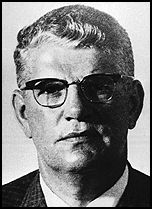
Concerned that the South American nation was on the verge of electing a socialist like Chile’s Salvador Allende, the CIA dispatched Mitrione using his USAID employment as official cover to Montevideo where he became “Chief Public Safety Adviser” to the Uruguayan police. At Mitrione’s instruction, homeless people were rounded up as guinea pigs for electroshock torture and other abusive interrogation methods, with many murdered in the process.
The very next year, Mitrione was captured and eventually executed by the Tupamaros after the U.S.-backed Uruguayan junta refused to exchange political prisoners for his release. In 1972, Greek-French filmmaker Costa-Gavras based his classic thriller State of Siege on the Mitrione story which only brought greater infamy to USAID.
Mitrione’s untimely end bears a resemblance to the fate of Fred Cuny, a mysterious American “disaster relief specialist” with deep military and intelligence connections who disappeared in Chechnya in April 1995. Like George W. Bush, Cuny billed himself as a Texan even though he was born in Connecticut in 1944. After a failed attempt at becoming a Marine as a young man, Cuny’s aspirations shifted to humanitarian work. For the next several decades, he embarked on a career in worldwide emergency assistance, helping developing countries like Bangladesh, Nicaragua and the short-lived Nigerian breakaway state of Biafra recover from natural disasters.
Instead of working directly for an NGO like Oxfam, the New Haven-born maverick started his own shadowy consulting company called Intertect that was hired by non-profits and aid agencies on a contractual basis. Cuny became a game changer in his field and authored several standardized manuals used in refugee mitigation before making the transition to emergency management in conflict zones, overseeing famine relief in war-stricken nations such as Ethiopia and Sri Lanka. Eventually, the self-described “Master of Disaster” started working exclusively in war zones where his real motives started to become murky.
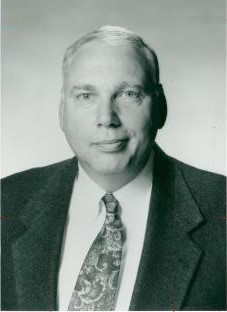
The recent USAID debacle in the Trump administration was a reminder of the CIA’s history of penetrating civil society with clandestine operators to give its skullduggery a humanitarian face. Very often, development agencies and the non-profit industrial complex have been a Trojan Horse for neo-colonialism in the Global South.
In the most sinister cases, they have even facilitated the sponsoring of terrorism. In the wake of the defunding of USAID, explosive remarks by U.S. Congressman Scott Perry (R-PA) suggesting the aid agency had funded Islamist terror groups, including ISIS and Boko Haram, were taken seriously enough by federal lawmakers in Nigeria to order a formal inquiry into the matter. While Perry’s claims are unproven, there is historical precedent for it.
During the Afghan-Soviet War, USAID worked hand-in-glove with Gulbuddin Hekmatyar and the Peshawar Seven, providing financial assistance to the anti-communist coalition of jihadist warlords and drug traffickers. Hekmatyar’s Hezb-e-Islami (“Party of Islam”) later helped facilitate the shipments from Ruslan Tsarni’s company to the Chechens via Osama bin Laden’s fake charity.
The al-Qaeda front company that financed both the Bosnian and Chechen mujahideen, Benevolence International Foundation, labeled itself as a “humanitarian organization helping those afflicted by wars,” providing “short-term relief such as emergency food distribution, long term projects, education and self-sufficiency to the children, widowed, refugees, injured and staff of vital governmental institutions.”
Except the Chechen movement did not just receive cloak-and-dagger support from phony, innocuously named Islamic “charities” but from what many assume to be legitimate philanthropic enterprises as well. During the Russo-Chechen conflict, Moscow frequently accused Western NGOs like Doctors Without Borders (known internationally as Médecins sans Frontières) of directly helping the separatists—when the truth is it likely ran much deeper. Enter Fred Cuny.
Hoping to one day land a position in government, Cuny set about ingratiating himself with the powers-that-be after working with the USAID recovery program in El Salvador during a devastating 1986 earthquake. At the end of the Persian Gulf War in 1991, his Dallas-based firm was tapped by the State Department to take part in Operation Provide Comfort, a U.S. military-led humanitarian aid operation safeguarding Kurdish refugees from the Iraqi military. In the wake of Operation Desert Storm, a Kurdish uprising was put down by Saddam Hussein’s troops, causing thousands to flee in an exodus to the Turkish and Iranian borders.
Part of the planning by Cuny and USAID involved the implementation of a no-fly zone over Iraqi Kurdistan to allow the delivery of food and shelter to those displaced. Operation Provide Comfort not only returned an estimated half a million Kurds to safety but eventually led to the establishment of an autonomous Kurdish region in northern Iraq, a valuable strategic asset for the U.S. in the Middle East. Years later, Cuny’s strategy of a no-fly zone would be replicated over Libyan airspace in the NATO overthrow of Muammar Gaddafi, an imperialist foray similarly conducted under the façade of protecting human rights.
The Iraq mission was such a success that Cuny was invited to participate in preparations for the 1993 U.S. military intervention in Somalia, based on hunger relief, but was ultimately sidelined. The Battle of Mogadishu turned out to be a complete disaster for U.S. forces partly because they ignored Cuny’s advice to steer clear of the war-ravaged Somali capital, a prognosis which further gained him entrée with decision-makers in Washington. Whether in the Mideast or Horn of Africa, humanitarianism was merely a cover for the American empire’s real aims, with Cuny serving as its point man. Next stop, Eastern Europe.
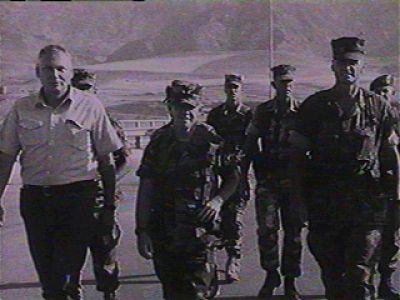
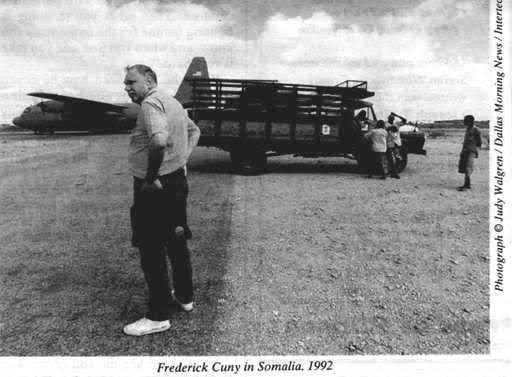
After the dissolution of the Soviet Union, Intertect was called upon by the State Department to lead “needs assessments” across the former USSR, with a particular focus on the Caucasus. Cuny’s analysis as a top-tier adviser helped formulate U.S. policy toward the newly independent states and federal subjects, many of which had disintegrated into “frozen conflicts” and interethnic strife. But first, the 6-foot, 3-inch Texan would undertake an assignment in the former Yugoslavia, another ex-socialist state fragmenting into civil war and ethnic cleansing since the restoration of capitalism.
In Bosnia, Cuny partnered with billionaire hedge-fund tycoon George Soros and his Open Society Foundations NGO on the pretext of bringing philanthropic aid to war-wrecked Sarajevo. In the 1980s, the Soros Foundation had played a central role in bringing down communist governments in the Soviet Bloc, pouring money into the coffers of “pro-democracy” protest movements like Poland’s Solidarity and Charter 77 in Czechoslovakia. Soros financed Hungarian dissident student groups in his country of origin as well.
Taking ideological inspiration from philosopher Karl Popper, Soros advocated “open societies” while profiting immensely as a currency manipulator from the neo-liberal market reforms imposed on the Socialist Bloc. It is no coincidence that the CIA sent millions to the very same “Color Revolutions” behind the Iron Curtain because the agency’s goal of dismantling communism overlapped with his Open Society Institute.
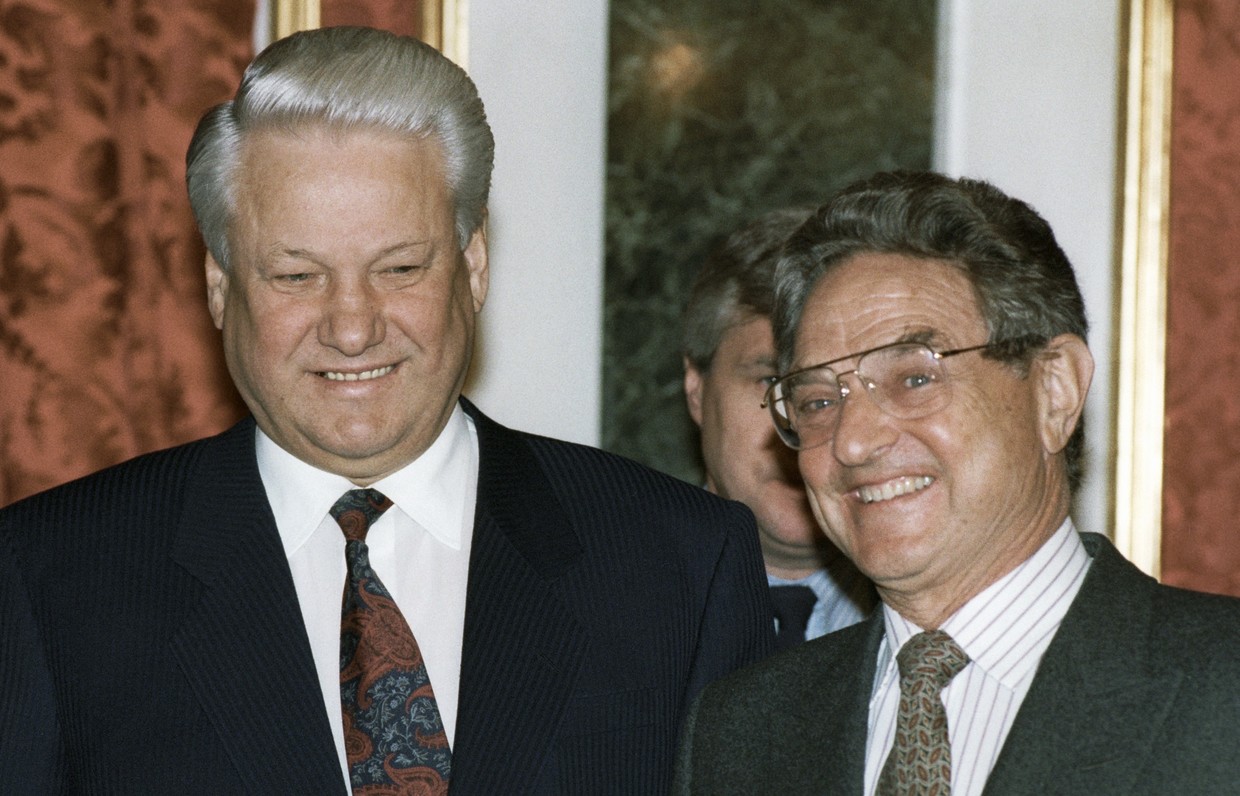
The former Yugoslavia had been part of the Non-Aligned Movement throughout the Cold War but, after the death of long-time President Josip Broz Tito, it could not escape the wave of protests bringing down Marxist-Leninist governments across Eastern Europe. In the grip of a nationalist fervor instigated by the West, the federal republic was being ripped apart by sectarian bloodshed when Soros—and more likely than not, the CIA—deployed Cuny to the Balkans.

Working with both the military and armed insurgents to access refugees is par for the course for development workers in hot spots, but Cuny developed a reputation as a renegade within the disaster relief community for overstepping the bounds of impartiality. Nowhere was this more apparent than in Bosnia where he became an unapologetically strong advocate for the Bosniak Muslims and extremely one-sided against the Serbs.
The fact that Cuny was known to hyperbolize details about his personal life did not help dispel the rumors he might be a spy, a suspicion even held by members of his own family. A fellow relief worker interviewed for the PBS documentary The Lost American surmised Cuny was “moonlighting for Uncle Sam.”
In 2001, the BBC reported that, during the Yugoslav Wars,
“The scale of America’s espionage operations cannot be understated. Hundreds of personnel from the Central Intelligence Agency, the Defense Intelligence Agency and the National Security Agency were deployed in Bosnia during 1994 and ’95.”
Meanwhile, the head of the United Nations (UN) peacekeeping mission in the former Yugoslavia, Thorvald Stoltenberg, conceded:
“American intelligence-gathering in the region was conducted on a huge scale. At any one time over 100 operators from across the spectrum of U.S. intelligence agencies were on the ground in Bosnia. They were deployed not only in non-governmental organizations (NGOs) but in UN civilian and military agencies as well.”
More than likely, Cuny was one of them. Following the first of a dubious pair of marketplace massacres in Sarajevo, the daredevil “humanitarian” personally lobbied for NATO air strikes against the Bosnian Serbs who were blamed for the atrocities which killed dozens of civilians. In actuality, the shelling of the markets, which conveniently took place as pressure was mounting for NATO involvement in the Balkans, were more conceivably “false-flag” operations to induce the Clinton administration into launching Operation Deliberate Force. In fact, the UN was already privy to earlier instances of subterfuge in which Bosnian Muslim forces staged attacks against their own people.
After the first Markale market bombardment in February 1994, UN peacekeepers at first said the shells were fired by the Bosniaks themselves. Suddenly, Cuny suspiciously appeared on the scene for an interview with ABC News anchor Peter Jennings to claim the mortars came from Republika Srpska (Bosnian Serb) territory and that NATO warplanes should have intervened. Within a few weeks, the alliance began the first combat engagement of its entire 45-year history, enforcing a no-fly zone over Bosnia and shooting down Serb jets.
After the second Markale massacre in August 1995, a few months after Cuny’s disappearance in Chechnya, Le Nouvel Observateur editor Jean Daniel let the cat out of the bag in an article titled “No More Lies About Bosnia” when he wrote that French Prime Minister Édouard Balladur verified the Bosniaks had been behind the attacks:
“‘They [the Muslims] have committed this carnage on their own people?’ I exclaimed in consternation. ‘Yes,’ confirmed the Prime Minister without hesitation, ‘but at least they have forced NATO to intervene.’”
French President Francois Mitterrand was also quoted saying that UN Secretary-General Boutros Boutros-Ghali “informed me that the projectile which hit the Markale marketplace in Sarajevo was an act of Muslim provocation.”
But it was too late—the NATO air campaign had already begun.
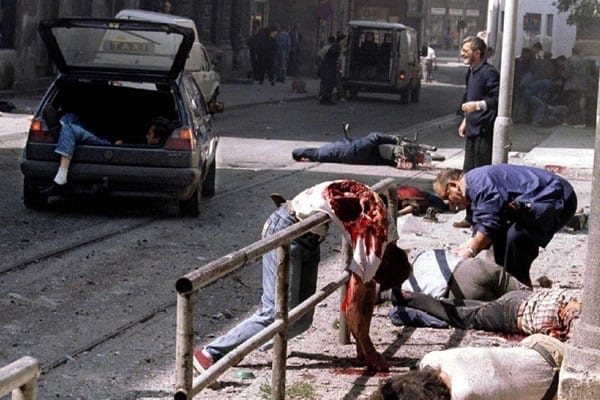
In the middle of the Bosnian war, Cuny and Soros joined with former U.S. Ambassador to Turkey Morton Abramowitz to start the International Crisis Group (ICG), a high-level policy-making think tank which appointed Zbigniew Brzezinski to its board of trustees.
Abramowitz had been one of the key figures in the Reagan administration who secured the delivery of MANPAD anti-aircraft missiles to the Afghan mujahideen and later led the calls for the CIA to arm the al-Qaeda-linked Kosovo Liberation Army (KLA). Presently, the one-time leader of the KLA and ex-President of Kosovo, Hashim Thaçi, is on trial for war crimes and was previously implicated in human organ trafficking. Abramowitz also wrote an endorsement letter for the late Fetullah Gülen to secure the radical Turkish imam’s safe harbor in Pennsylvania.
Abramowitz’s lengthy list of affiliations typified the revolving door between foreign policy think tanks and emergency management NGOs, serving on the committee of a regime-change arm like the National Endowment for Democracy (NED) while synchronously holding advisory board positions with Human Rights Watch (HRW) and the International Rescue Committee (IRC).
The latter brought Intertect under its auspices to assist Cuny’s work in Sarajevo using Soros Foundation grants to build a water filtration system for the blockaded city. According to New York Times Magazine correspondent Scott Anderson’s book The Man Who Tried to Save the World, the water treatment was stymied by Bosnia’s own government because it feared a decrease in civilian deaths might diminish sympathy from the international community and hinder a source of war propaganda.
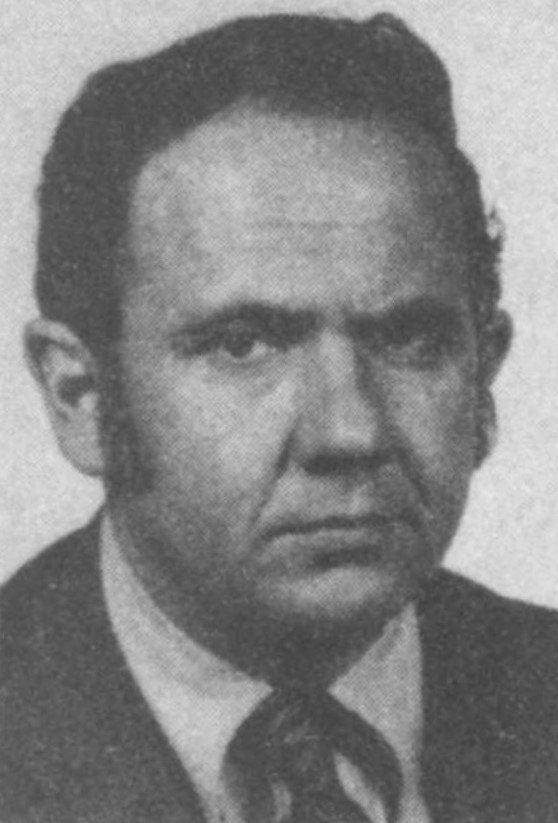
Abramowitz also belonged to the misleadingly named American Committee for Peace in Chechnya (ACPC), later amended to “American Committee for Peace in the Caucasus,” to dissociate from the notoriety brought to the separatists by the Moscow Theater and Beslan school terrorist attacks.
Chaired by Brzezinski and former U.S. Secretary of State Alexander Haig, the Chechen lobby group was filled with neo-conservative idealogues and deep state intellectuals. The ever-itinerant Cuny soon arranged with the Soros Foundation to lead an assessment in Chechnya just as the Russians were singled out for war crimes by HRW, Amnesty International and other leading Western NGOs.
Upon his return from a single visit to the conflict-ridden region in 1995, Cuny penned a lengthy opinion column for The New York Review of Books condemning Russia’s admittedly brutal military campaign during the first Chechen war. He also testified before a congressional subcommittee assailing the tactics used in the Russian offensive ordered by Yeltsin, which at the time officially had the full endorsement of the Clinton administration.
This caused a row within the Soros Foundation, as such a glaring violation of the expected neutrality of aid workers risked putting his own peers in jeopardy, especially those employed by an NGO already seen as a CIA front by the Russians. On the other hand, Cuny himself never came in harm’s way in Sarajevo partly because he played up the mystique that he might be a spook. In Chechnya, however, he would not be as fortunate, except his fate would unexpectedly arrive at the hands of those with whom he was collaborating.
Russian-based media labeled Cuny a spy when he conspicuously showed up and began to curry favor with the “rebels” in Chechnya, a trouble spot so perilous and battle-scarred that virtually no foreign development agencies were active in the republic. It was for this reason that pin was initially blamed on the Russian military when the relief guru suddenly vanished in separatist-controlled territory days after his diatribe against the assault on Grozny was published.
Rumors spread that the Russians had retaliated by dropping leaflets inside separatist-held areas identifying Cuny as one of their own spies, and that the Chechens fell for the disinformation enough to execute the American aid worker along with his three companions. While Cuny’s body was never located, it was later ascertained by his family and correspondent Scott Anderson that his killing by a firing squad of Chechen bandits had nothing to do with the Russians at all.
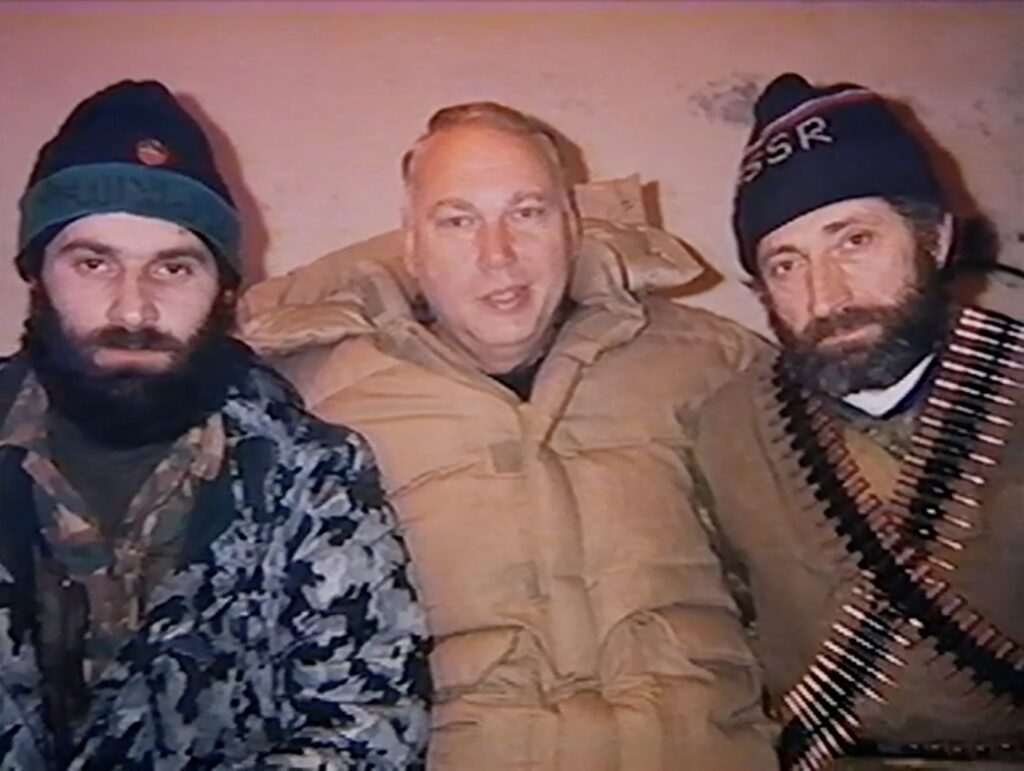
Touting his national security connections, Cuny had professedly returned to Chechnya hoping to broker a temporary cease-fire to grant the entrance of relief assistance to the beleaguered republic.
Already skirting the line between humanitarian aid and military intervention, Cuny was now shifting from non-governmental work to statecraft. In the thick of intense fighting, he ventured toward the heavily fortified village of Bamut and slipped behind separatist lines with the intention of reaching Chechnya’s then-President Dzhokhar Dudayev.
If the Texan was just an ordinary relief worker and not a deep cover agent, it was difficult to fathom when the news of his disappearance produced an exhaustive on-the-ground, search-and-rescue mission that saw unprecedented coordination among the CIA, FBI and Federal Security Service (FSB) of Russia, as well as the American, Russian and separatist authorities.
U.S. Deputy Secretary of State Strobe Talbott told the press that “finding Fred Cuny is not just a concern for us, it is a priority.” Equally set on learning his whereabouts was the employer that had dispatched him, the Soros Foundation, not to mention Cuny’s colleagues in emergency management and his own family members. To Fred Cuny, there was clearly more than meets the eye.
While visiting Moscow for the historic 50th anniversary Victory Day ceremony, U.S. President Bill Clinton took the opportunity to formally ask Russian President Boris Yeltsin for help in tracking down the aid planner who, by that time, had been missing for nearly a month. It was soon learned that it was not a Russian deception campaign blowing his cover that endangered Cuny’s life but something else entirely.
If the Chechens had done the deed on their own accord, a mystery still surrounded the motive for the separatists to inexplicably murder an influential American with prominent U.S. government contacts who defended their cause. In the words of journalist Scott Anderson, Cuny was “well known and well-liked by senior rebel commanders,” including Aslan Maskhadov, Dudayev’s successor.
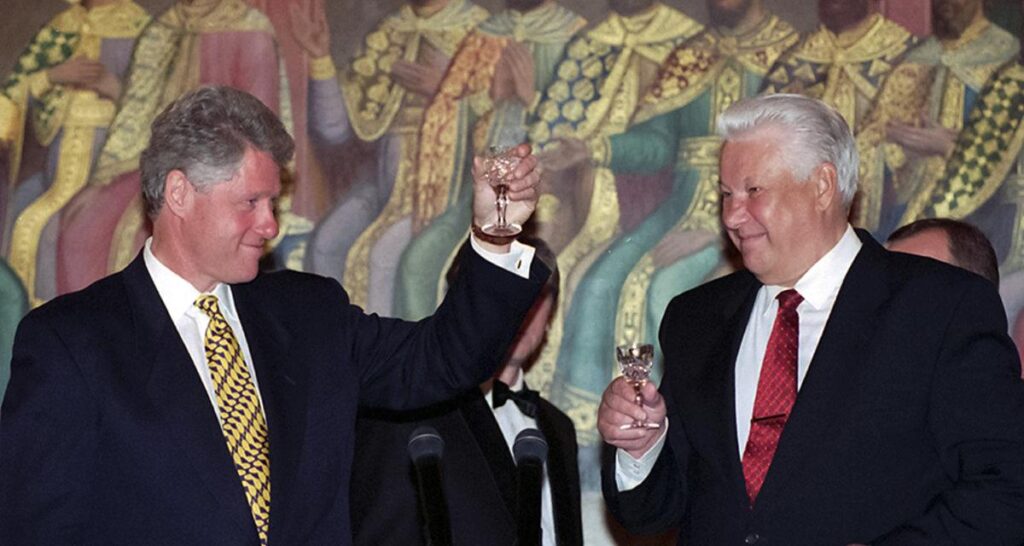
One theory floated was that Dudayev personally ordered the execution because Cuny had learned the truth surrounding a coveted secret in Bamut, which is home to a decommissioned Soviet-era missile base that once housed nuclear warheads. While the atomic arsenal in post-Soviet states was officially dismantled and returned to Russia during the chaotic breakup of the USSR, Dudayev publicly claimed to possess two “loose nukes” and was blackmailing Moscow into thinking he might use them if Chechnya were refused autonomy.
Whether or not the Chechens had any nuclear weapons was irrelevant, but the possibility that they did was enough to create a strategic advantage. If Cuny was able to confirm Dudayev was bluffing and word got out, it could have sealed his fate. (The Chechen leader would himself be killed 12 months later in a Russian air strike that pinpointed his location by intercepting a satellite phone call.)
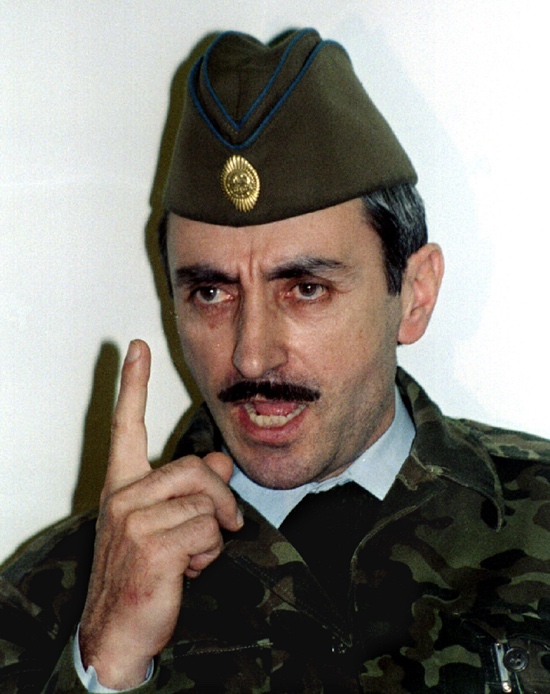
The only reason Cuny’s disappearance did not receive nationwide attention in the United States was because the Oklahoma City bombing occurred the same week, which buried other national news headlines. Coincidentally, it has been long rumored that one of the “John Doe” mystery accomplices of executed perpetrator Timothy McVeigh was none other than Ramzi Yousef, the al-Qaeda-connected militant found guilty of the 1993 World Trade Center bombing and nephew of alleged 9/11 mastermind, Khalid Sheikh Mohammed.
In the late 1980s, the early incarnation of Osama bin Laden’s bogus charity that supported the Chechens, then known as the Benevolence International Corp., was founded as a front for Abu Sayyaf, a Philippines-based Islamist affiliate made up of Afghan mujahideen veterans. Months prior to the bombing of the Alfred P. Murrah Federal Building in the Oklahoma capital, McVeigh and sentenced co-conspirator Terry Nichols visited Cebu City in the Philippines, while a government informant who infiltrated Abu Sayyaf named Edwin Angeles claimed the two met with Yousef at a terrorist gathering. Meanwhile, the Oklahoma City and 1993 WTC bombings bore a striking resemblance to one another in their use of Ryder truck bombs.
While Fred Cuny never became a household name, his story would eventually serve as the indirect inspiration for the 2003 film Beyond Borders starring Angelina Jolie, which coincided with the Hollywood actress’s own real-world segue into pseudo-humanitarian efforts as a Goodwill Ambassador for the UN. In the movie, Jolie plays a socialite who abandons her life of privilege to do charity work for a trailblazing relief specialist played by Clive Owen, a fictional part clearly based on Cuny for the screen.

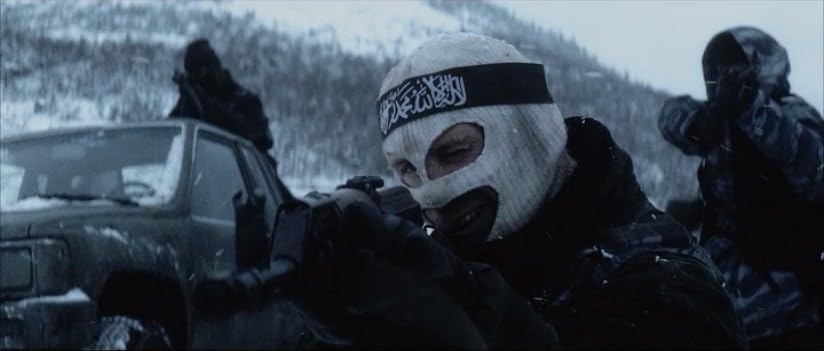
At one point early in the feature, Owen’s character is secretly recruited as an intelligence asset by the CIA. Later, he is busted by Vietnamese troops smuggling arms inside humanitarian aid shipments in Cambodia, a country where Cuny did refugee work in the 1970s (the CIA is known to have covertly supported the Khmer Rouge). Initially dismayed, Jolie’s lovestruck character goes looking for Owen in Chechnya when he goes missing at the end. The box office bomb was roundly criticized for its use of Third World hardship as a backdrop for the romance between the two “white savior” leads, but also by many within the disaster community for acknowledging the reality of aid workers as stooges of espionage.
Cuny became a legend in what former UN expert Alfred de Zayas calls the “human rights industry,” where today he is celebrated in the memoirs of leading humanitarian interventionist advocates such as former U.S. Ambassador to the UN Samantha Power. The diplomat crossed paths with Cuny in the Balkans when she was a free-lance correspondent before turning the doctrine of Washington’s so-called “Responsibility to Protect” (R2P) into a life-long obsession.
Between her graduation from Yale University and her stint as a war propagandist, a young Power had also worked as a “researcher” at the Morton Abramowitz-chaired think tank, the Carnegie Endowment for International Peace. Most recently, Power served as the head of USAID under Joe Biden.
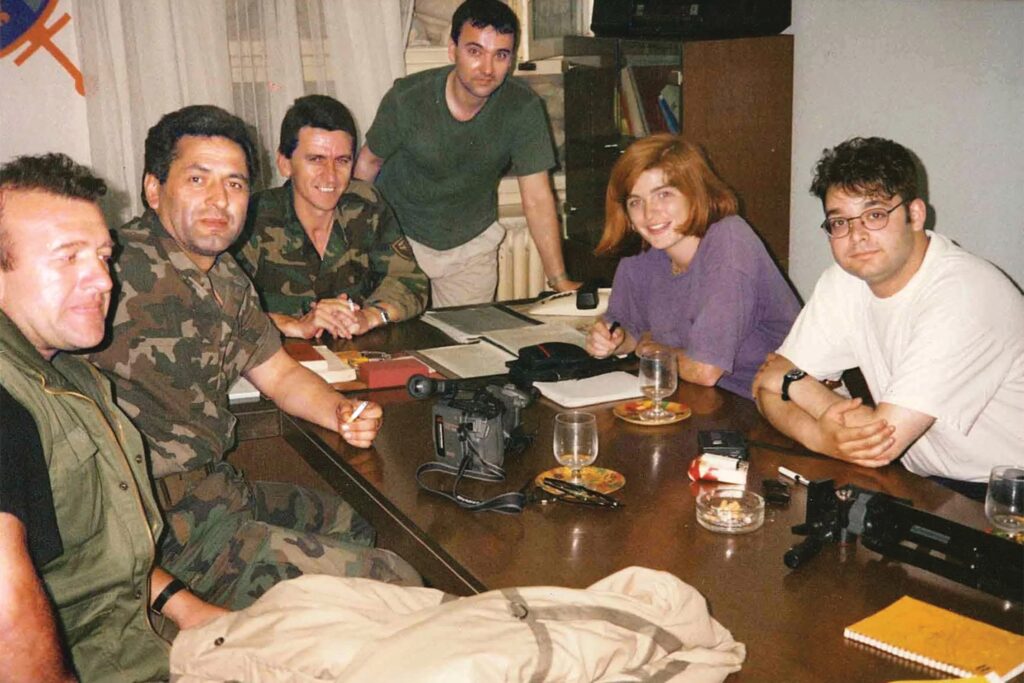
USAID was originally established to consolidate various international assistance programs during the Cold War. While its stated purpose was to foster economic growth and humanitarian aid, its real function was as an instrument to counter Soviet influence in the developing world.
Although it is a government agency, it partners with and funds civil society to carry out its development programs and projects in countries around the world. Ostensibly an independent federal agency, it receives foreign policy guidance from the Secretary of State, and it is not by accident that USAID’s practices have always aligned with Washington’s national security goals.
Liberals screaming bloody murder over the Trump administration’s spending freeze can take comfort in the fact that the agency appears to be merging into the State Department and not actually ceasing operations completely. In the meantime, the CIA will surely find another apparatus for its regime-change machinations.
USAID was founded in 1961 under U.S. President John F. Kennedy. Recently, the Trump administration released a new trove of declassified documents pertaining to the November 1963 assassination of the 35th U.S. president in Fred Cuny’s hometown of Dallas, Texas. Some of the most sensational revelations were regarding the extent of CIA covert operations around the globe at the time, including in George Soros’s native Hungary.
For decades, Western intelligence agencies denied any involvement in the 1956 Hungarian uprising, whose proponents have long insisted was entirely spontaneous. While the new JFK files do not irrefutably prove direct involvement in the Hungarian counter-revolution against the communist government, they do indicate the commander of the insurgency, General Bela Kiraly, was a CIA asset. It was already divulged in previous decades that the British Intelligence Service (MI6) had trained many of the “freedom fighters” in the 1956 revolt that was crushed by a Soviet military intervention. Subsequently, Kiraly fled to the United States where he founded a CIA-sponsored “non-profit charity” called the Hungarian Freedom Fighters Federation, Inc. (HFFF).
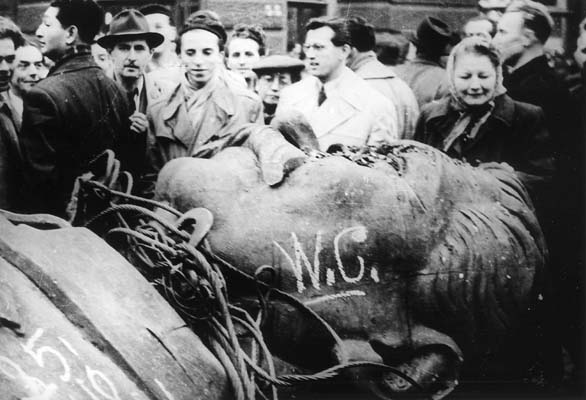
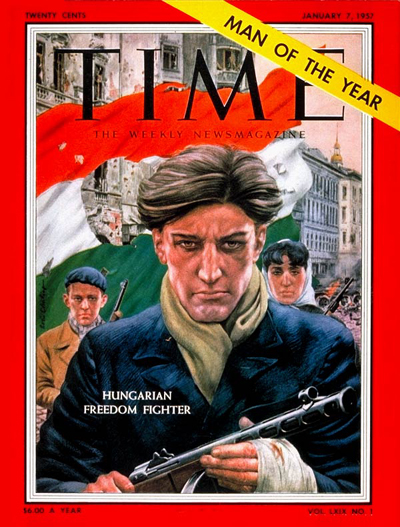
Throughout the Cold War, Hungary was designated as one of the “Captive Nations” within the Soviet sphere of influence in Eastern Europe. By his own Machiavellian admission, Zbigniew Brzezinski engineered a similar Soviet intervention using Islamists in Afghanistan “that had the effect of drawing the Russians into the Afghan trap” and gave “the USSR its Vietnam War.” Like the Hungarian insurrection in 1956, which inevitably featured fascist remnants from the Arrow Cross Party that collaborated with Nazi Germany, the Afghan mujahideen were promoted as heroic resistance fighters and even portrayed favorably in Hollywood movies like Rambo III and the 1987 James Bond entry, The Living Daylights. Religious extremists who disfigured women’s faces with acid for refusing to veil and banned girls from schools were given a facelift as pro-democracy rebels.
Upon entering the Carter administration, Brzezinski also founded the Nationalities Working Group (NWG) devoted to the idea of undermining the USSR by stirring up ethnic tensions. A 1982 CIA policy paper discusses how the NWG expanded upon the Cold War strategy of “Captive Nations” to promote Islamism among Muslim minority nationalities as a tool for subverting the Soviets. In 1994, Brzezinski co-founded the Victims of Communism Memorial Foundation (VOC) with National Captive Nations Committee (NCNC) chairman Lev Dobriansky, a Ukrainian nationalist who penned the original Captive Nations resolution passed by Congress in 1959 that called for the overthrow of Soviet-aligned governments.
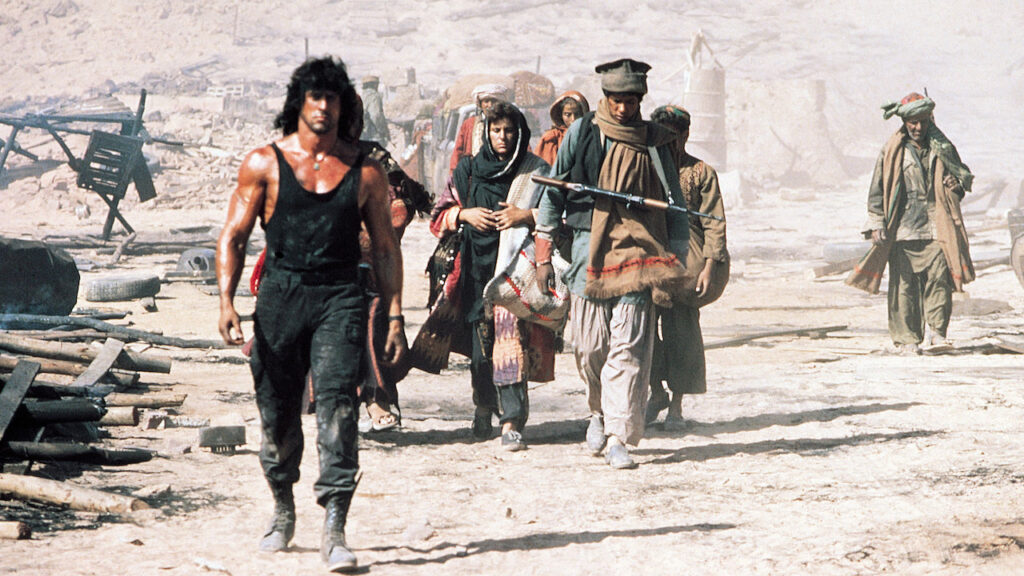
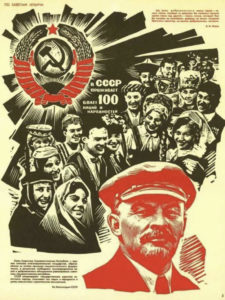
The NCNC was frequently criticized as anti-Russian by Russian émigrés for often equating the Soviet Union with the Motherland itself. Once the Cold War was over and the West continued to foment breakaway movements like Chechen separatism within the newly formed Russian Federation, it became abundantly clear the suspicions of Russian expats were right all along.
Through a multitude of civil society organizations, the U.S. bankrolled Chechen groups both inside Russia and in exile. However, significant amounts of financial aid spilled over into Chechen and other Caucasian jihadist groups, which the State Department and Western intelligence agencies consistently refused to refer to as terrorists, even when they had well-documented associations with al-Qaeda. In hindsight, it is not a question of whether the CIA supported Chechen separatist terrorism but when that support began, which may have been when Fred Cuny set foot in southern Russia.
Historically, the human rights industry and aid-industrial complex has done little to support authentic movements of national liberation fighting for their self-determination, a process which is only achievable by breaking from the tentacles of Western imperialism.
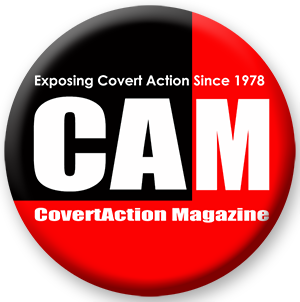
CovertAction Magazine is made possible by subscriptions, orders and donations from readers like you.
Blow the Whistle on U.S. Imperialism
Click the whistle and donate
When you donate to CovertAction Magazine, you are supporting investigative journalism. Your contributions go directly to supporting the development, production, editing, and dissemination of the Magazine.
CovertAction Magazine does not receive corporate or government sponsorship. Yet, we hold a steadfast commitment to providing compensation for writers, editorial and technical support. Your support helps facilitate this compensation as well as increase the caliber of this work.
Please make a donation by clicking on the donate logo above and enter the amount and your credit or debit card information.
CovertAction Institute, Inc. (CAI) is a 501(c)(3) non-profit organization and your gift is tax-deductible for federal income purposes. CAI’s tax-exempt ID number is 87-2461683.
We sincerely thank you for your support.
Disclaimer: The contents of this article are the sole responsibility of the author(s). CovertAction Institute, Inc. (CAI), including its Board of Directors (BD), Editorial Board (EB), Advisory Board (AB), staff, volunteers and its projects (including CovertAction Magazine) are not responsible for any inaccurate or incorrect statement in this article. This article also does not necessarily represent the views the BD, the EB, the AB, staff, volunteers, or any members of its projects.
Differing viewpoints: CAM publishes articles with differing viewpoints in an effort to nurture vibrant debate and thoughtful critical analysis. Feel free to comment on the articles in the comment section and/or send your letters to the Editors, which we will publish in the Letters column.
Copyrighted Material: This web site may contain copyrighted material the use of which has not always been specifically authorized by the copyright owner. As a not-for-profit charitable organization incorporated in the State of New York, we are making such material available in an effort to advance the understanding of humanity’s problems and hopefully to help find solutions for those problems. We believe this constitutes a ‘fair use’ of any such copyrighted material as provided for in section 107 of the US Copyright Law. You can read more about ‘fair use’ and US Copyright Law at the Legal Information Institute of Cornell Law School.
Republishing: CovertAction Magazine (CAM) grants permission to cross-post CAM articles on not-for-profit community internet sites as long as the source is acknowledged together with a hyperlink to the original CovertAction Magazine article. Also, kindly let us know at info@CovertActionMagazine.com. For publication of CAM articles in print or other forms including commercial internet sites, contact: info@CovertActionMagazine.com.
By using this site, you agree to these terms above.
About the Author

Max Parry is an independent journalist and geopolitical analyst based in Baltimore.
His writing has appeared widely in alternative media and he is a frequent political commentator featured in Sputnik News and Press TV. He also hosts the podcast “Captive Minds.”
Max can be reached at maxrparry@live.com.
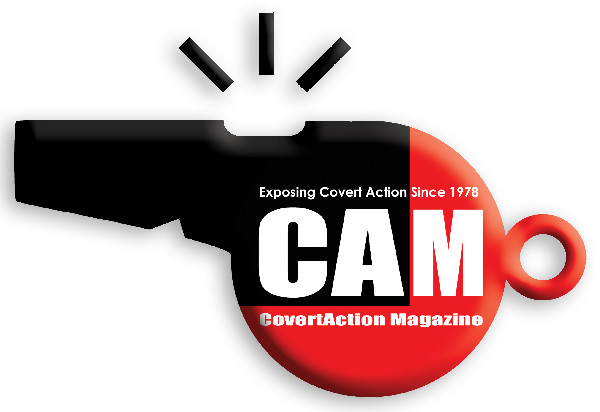


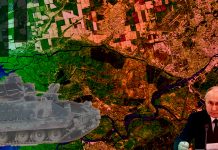
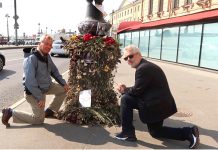
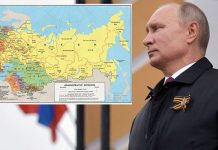
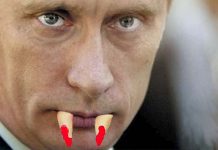
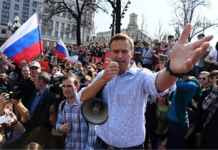



Is Press TV an Iranian news outlet?